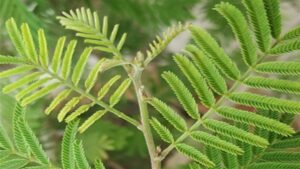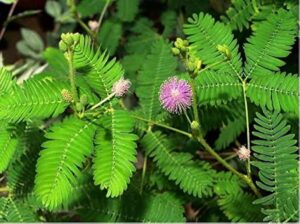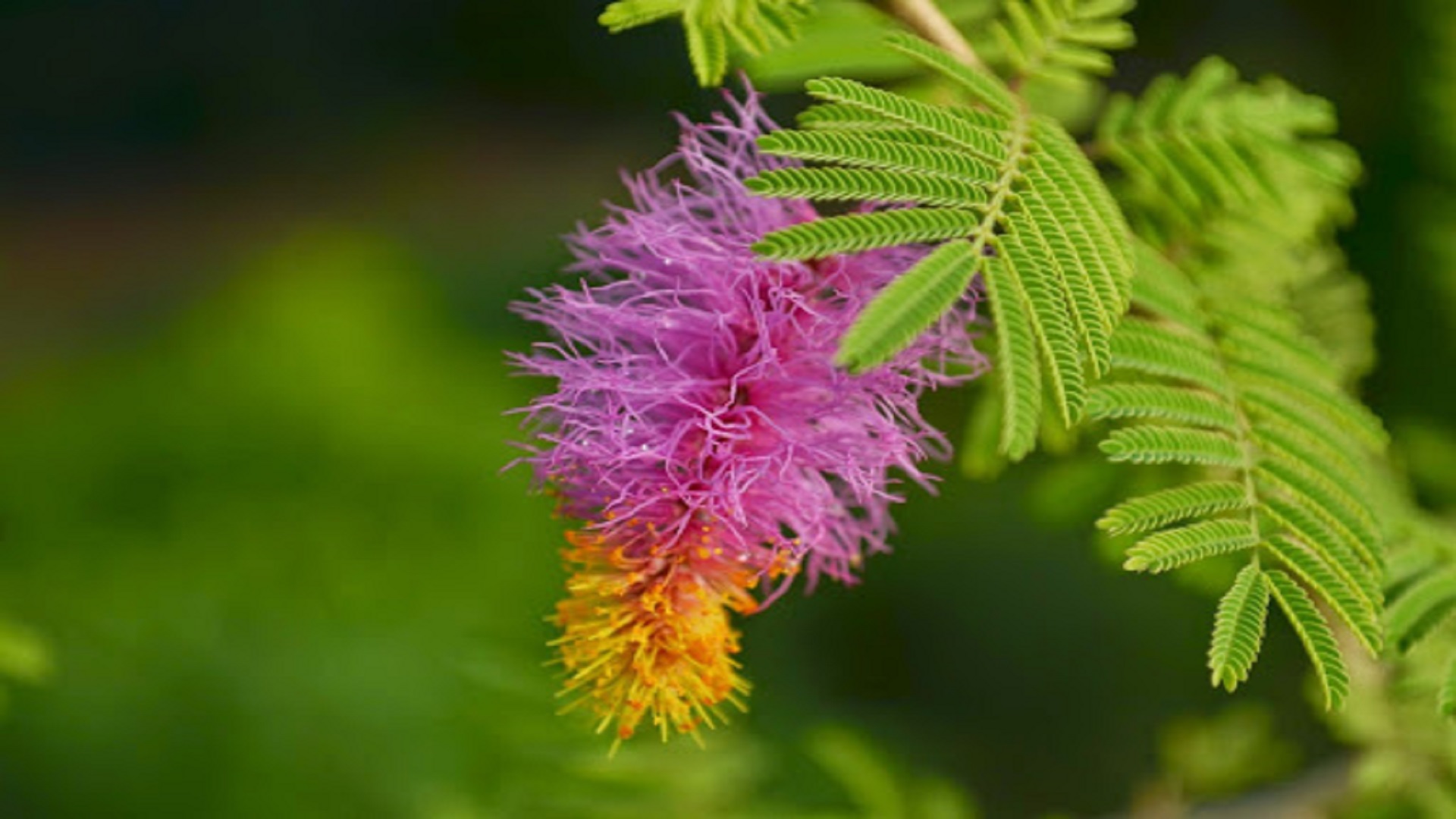What is shami plants?
In English, the Shami plant is referred to as Prosopis cineraria. This kind of flowering plant is indigenous to the Indian subcontinent and a few regions of West Asia. It is distinguished by its small, springtime-blooming yellow flowers and prickly branches. Live an Ayurvedic lifestyle with AYURVEDA. Other names for the shame plant include Banni Mara, Indian Mesquite, Shami, Khejri tree, and Sponge tree. An important role for the highly esteemed shami plant can be found in traditional herbal medicine. This tree’s leaves have the ability to heal mouth ulcers. The leaves can be chewed for a few minutes, allowing the liquid to stay in the mouth and healing ulcers. The edema considerably reduces. Next, spit out the fluid.
How to identify shami plants ?
Indian shami, sometimes referred to as White Kutch, is a therapeutic plant. The plant known by its botanical name is Acacia polyantha Wild. In Hindi, the shami plant is called chikkur.
The identification of shami plants the tree is medium-sized, with white-pubescent limbs and paper-flakes-covered white bark. Its fruits are flat with a triangular tip and a small stem at the base. Its flowers grow slowly and are pale yellow to nearly white.

Benefits of shame plants
An advantageous houseplant is the shami plant. Every homeowner wants their house to be the most exquisite location on the globe. Trees and other greenery bring positivity and beauty into our houses. They offer amazing advantages in addition to air purification. Some plants have the power to bring wealth and good fortune into our homes. The shami plant is one such plant. Each plant and tree has an individual personality. Because of their diverse effects, its shape, color, scent, fruits, and blossoms are all connected to different planets. But certain plants are also revered. For example, practically every Hindu home worships tulsi. Like most Feng shui plants, it is said to have the ability to remove all negative energy from the home we all are aware of the benefits of Shami plant. Along with its religious importance, it is also known for its astrological and medicinal benefits.
1 This plant is as beneficial as the basil plant. The adverse effects of Shani Dev can be reduced by offering its fruits, leaves, roots and juice.
2 Planting Shami tree in the house brings happiness, peace and wealth, it also protects from negative energy.
3 In the realm of medicine, this plant is quite significant. Numerous illnesses, including mental problems, schizophrenia, ringworm, respiratory tract infections, diarrhea, leucorrhoea, etc., are treated with it.
4 There are several therapeutic uses for various plant components. A decoction of the ground bark relieves toothache and sore throats, and the dried bark is used to cure ulcers. Its leaves are used as medication for dysentery and antiseptics.
5 Its leaf juice is applied topically to eradicate intestinal parasitic worms. Urogenital diseases are treated using the pods.
6 Ayurveda states that using Shami plants (Shami plant benefits) can help balance the body’s Pitta and Kapha doshas. Defects can be treated using its fruits and bark.
6 Additionally, it helps with bleeding problems, scorpion stings, burning sensations in the cheeks and eyes, and itchy skin conditions.
7 It is also recommended for women who experience recurrent miscarriages to take it.
8 Facial hair removal is another usage for the paste made from the fruits of the Shami plant.
How to take care of shame plant ?
Sunlight: shame plants require a lot of light especially during germination. Place the plant in a shady spot with plenty of light.
Temperature: shame plant requires minimum temperature of 9-20 degrees Celsius for germination. However, as the plant grows, they become stronger. In states with extreme heat like Madhya Pradesh, Rajasthan and Gujarat, these plants cannot tolerate sunlight. Plants should be kept in shade in such areas.
Pruning: Even though there is no need to prune the shami plant, it is good to prune these plants because it helps in faster growth of the plants. So prune the plants and remove all dry leaves and flowers.
Watering: Once grown a bit, these plants do not require much water. It can survive even in extreme heat. Therefore, after the top soil becomes dry, water again. However, during germination, you must keep the plant moist. It is important to ensure that water reaches every part of the soil.

How the Shami plant is grown ?
There are two methods for growing Shami plants: cuttings and seeds. Growing shami plants from cuttings and seeds is the simplest method. All you need to do is remember a few basic things.
A. Using cutting to grow Shami plants
Step 1: Cut a stem from a plant that you will utilize the cuttings from. Cut the plant’s stems at a 45° angle for these cuttings. It is possible that some of the cuttings won’t germinate, so make sure to cut three or four stems minimum.
Step 2: Remove all of the leaves off the stem’s sides in order to get these cuttings ready for planting. During germination, the leaves will burrow into the earth; cutting the edges encourages rapid growth. Never remove leaves from their tips.
Step 3: After the cuttings are ready, soak them in the hormone called rooting. If you would rather not use artificial rooting hormones, you can create your own at home by combining one part honey with three parts aloe vera gel. The process of rooting will be accelerated by rooting hormone.
Step 4: To produce potting mix, combine equal parts sand, compost, and loamy soil. To stop sand from pouring out of the tube’s hole, take a container. A stone could be set on the pot’s bottom. Next, fill the lower third of the container with potting mix.
Step 5: After the pot is ready, use your fingers or any other long, pointy item to poke holes in the mixture. Rooting hormone needs to be applied to the stem’s tip. You can now fill the pot with soil and set the cutting inside. Give the plant plenty of water.
B. Planting Shami from Seeds
1 Purchase Shami Plant Seeds at the Closest Nursery.
2 It should be soaked for a minimum of 12 to 24 hours prior to planting.
3 Gently scrape off the seed’s outer coating or coat to avoid harming the embryo.
4 As mentioned in step 4 above, gently cover the potting soil after planting the seeds.
5 Keep the pot in bright, direct light for germination.
CONCLUSION
Look no farther than us if you’re searching for an experienced and trustworthy landscape company to enhance the look and value of your property. The following are among the landscaping services we offer: Design and installation of hardscapes, as well as other landscape elements like lighting, irrigation, plants, trees, and flowers. An established landscape requires upkeep, which includes mowing, mulching, weeding, and fertilizing. Seasonal services include leaf raking, snow removal, and spring and fall clean-ups.We are equipped to manage commercial projects of any size and nature, ranging from office buildings and retail establishments to hotels and schools. In order to achieve results that beyond your expectations, we collaborate with you to fully understand your goals, demands, and financial constraints.
Shami plants are significant in both architecture and religion. The special significance of the Shami plant is also mentioned in Vastu Shastra. Shami plants are among them. If you worship the Shami tree appropriately, you will benefit from its qualities. You may get rid of negativity in your house by using shami plants. From a religious standpoint, this plant is very sacred to Lord Shiva. Moreover, it is said that Shani resides in the Shami plant.







